Space shuttle Discovery's next mission will be to awe and inspire those who visit it at the Smithsonian Institution. NASA's workhorse shuttle was retired after completing its trip last week to the International Space Station -- that’s 39 missions covering 5,750 orbits, 150 million miles, and almost a year in space since it first lifted off in 1984. It's name was inspired by the exploring ships of the past, including one that plied the Hudson Bay in the early 1600s seeking a northwest passage from the Atlantic to the Pacific oceans. Discovery carried some of NASA most-distinguished astronauts, including Eileen Collins, the first female commander, Sergei Krikalev, the first Russian to fly on a shuttle, and Senator John Glenn, who returned to space at 76. In its last mission, Discovery dropped Robonaut 2, the first dexterous humanoid robot in space, at the space station. -- Lloyd Young (45 photos total)

2
Space shuttle crew members, from left, Nicole Stott, Alvin Drew, Michael Barratt, pilot Eric Boe, Steve Bowen, and commander Steve Lindsey left their quarters at Kennedy Space Center to board Discovery for its final mission in space, Feb. 24. (Bruce Weaver/AFP/Getty Images) #
3
Space shuttle Discovery lifts off from Kennedy Space Center in Florida bound for the International Space Station on its 39th and final flight. (Stan Honda/AFP/Getty Images) #
4
Erik Halsteili, of Bellingham, Wash., watches the launch of Discovery while dug into the sand on the beach in Cape Canaveral, Fla., Feb. 24. (Phelan M. Ebenhack/Associated Press) #
5
Space shuttle Discovery lifts off from the Kennedy Space Center in Cape Canaveral, Fla., Feb. 24. (Wifredo Lee/Associated Press) #
6
NASA Administrator Charles Bolden and other management watch the launch of Discovery (STS-133) from the firing room at Kennedy Space Center, Feb. 24. (Bill Inalls/NASA) #
7
NASA employees Bet Eldred (left) and Dana St. Jean hug after the Discovery lifted off from launch pad 39A at the Kennedy Space Center, Feb. 24. (Mark Wilson/Getty Images) #
8
Space shuttle Discovery (below) continues into orbit as the two solid rocket boosters separate from the spacecraft after launch, Feb. 24. (Pierre Ducharme/Reuters) #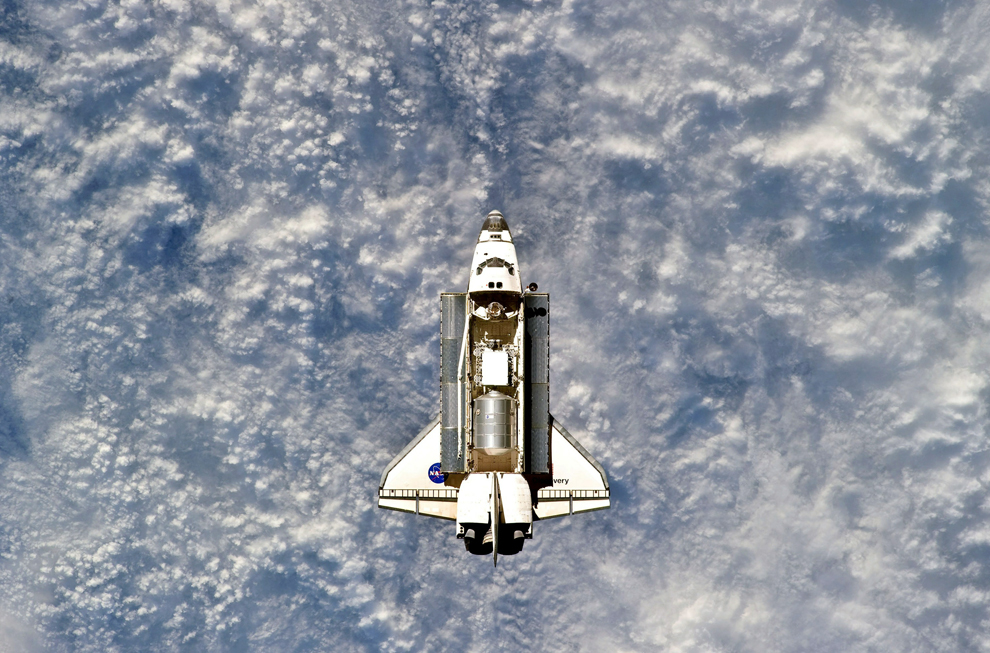
9
With clouds below it, the space shuttle Discovery approaches the International Space Station for docking, Feb. 26. (NASA) #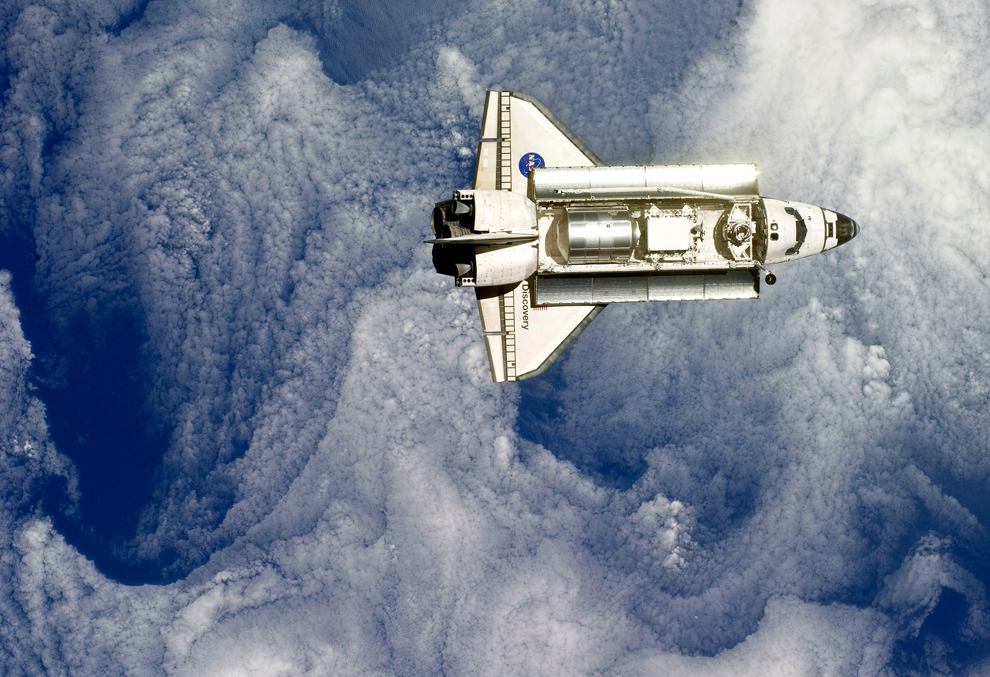
11
Carrying the Italian-built Permanent Multipurpose Module, Express Logistics Carrier 4, and Robonaut 2, the first humanoid robot in space, Discovery approaches the International Space Station, Feb. 26. (NASA) #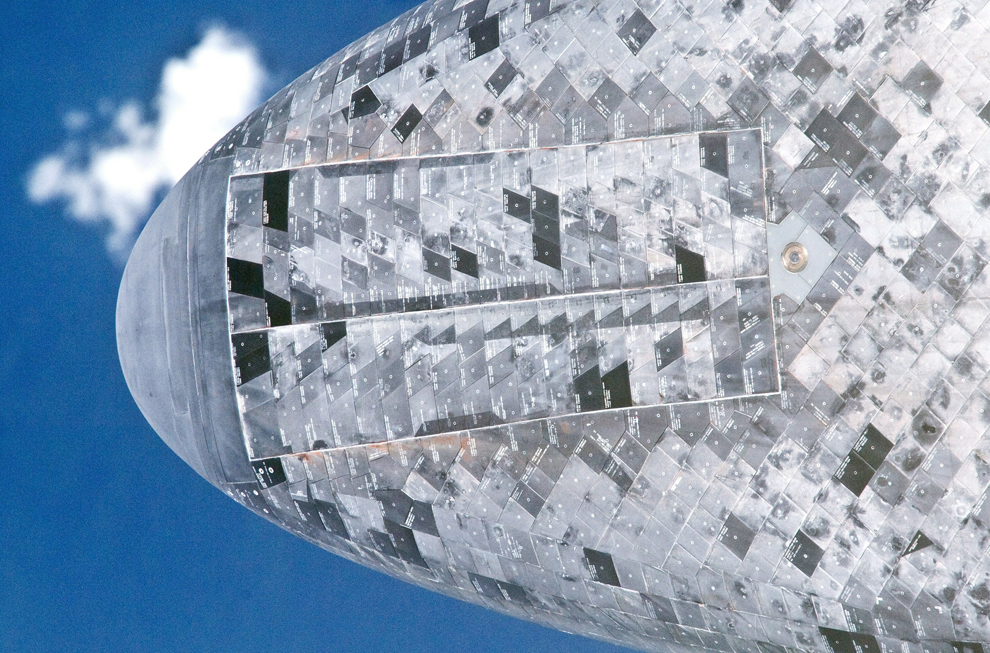
12
The underside of the nose of Discovery was visible as the space shuttle performed a back-flip for the rendezvous pitch maneuver during its approach to the International Space Station, Feb. 26. (NASA) #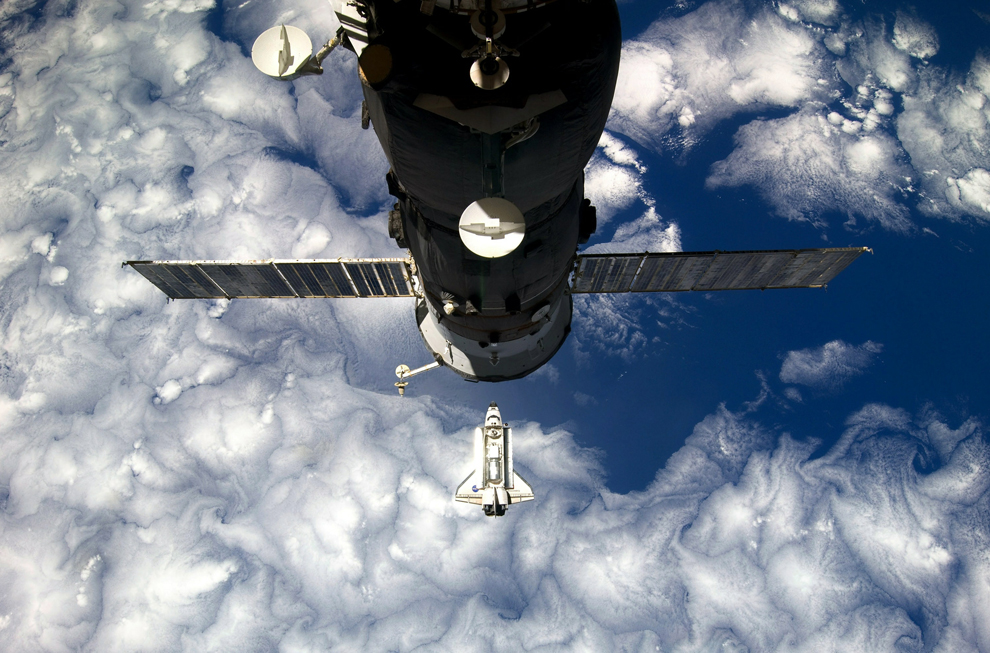
13
The Earth's blue breaks through clouds beneath Discovery as the space shuttle approaches the International Space Station, Feb. 26. (NASA) #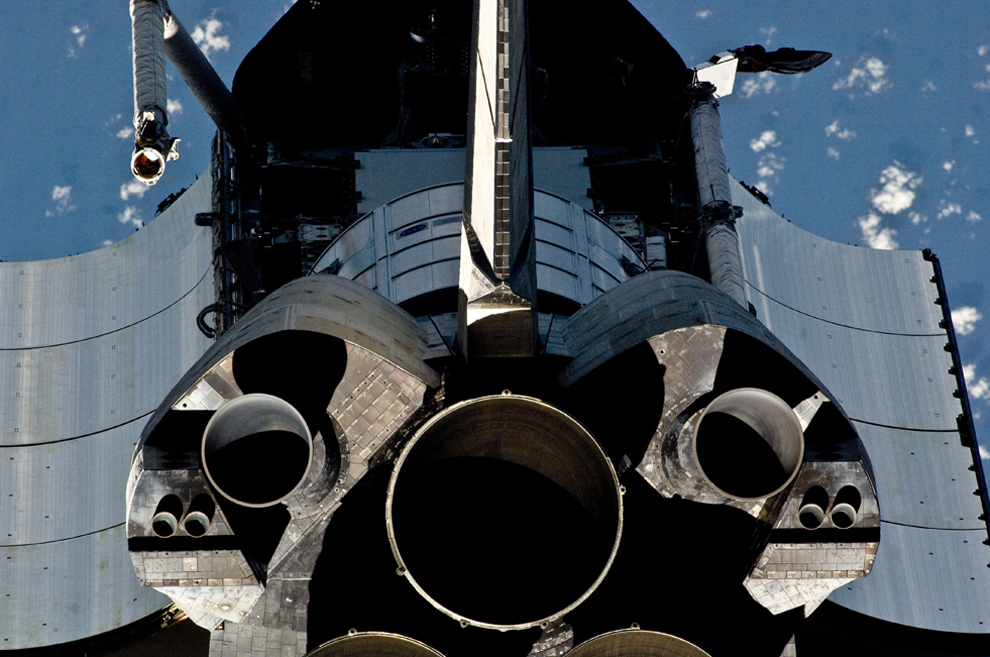
15
The Expedition 26 crew photographed the aft portion of Discovery's main engines, part of the cargo bay, vertical stabilizer, and orbital maneuvering system pods during a survey of the vehicle's approach prior to docking, Feb. 26. (NASA) #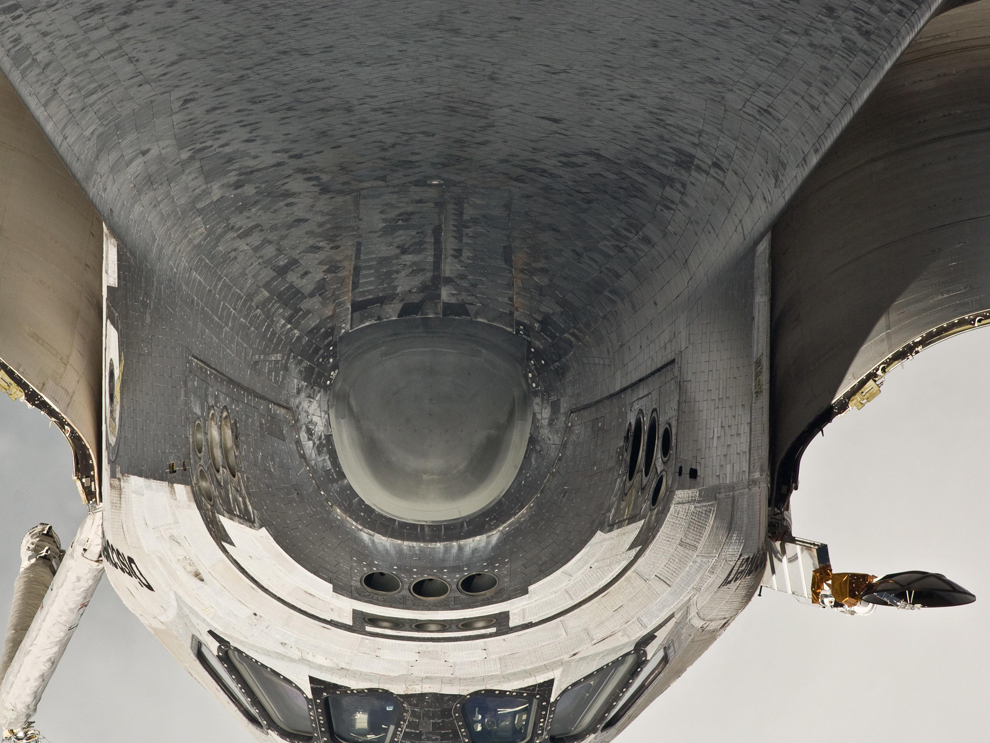
16
The nose, the forward underside, and crew cabin of the space shuttle Discovery were photographed during maneuvers prior to docking, Feb. 26. (NASA) #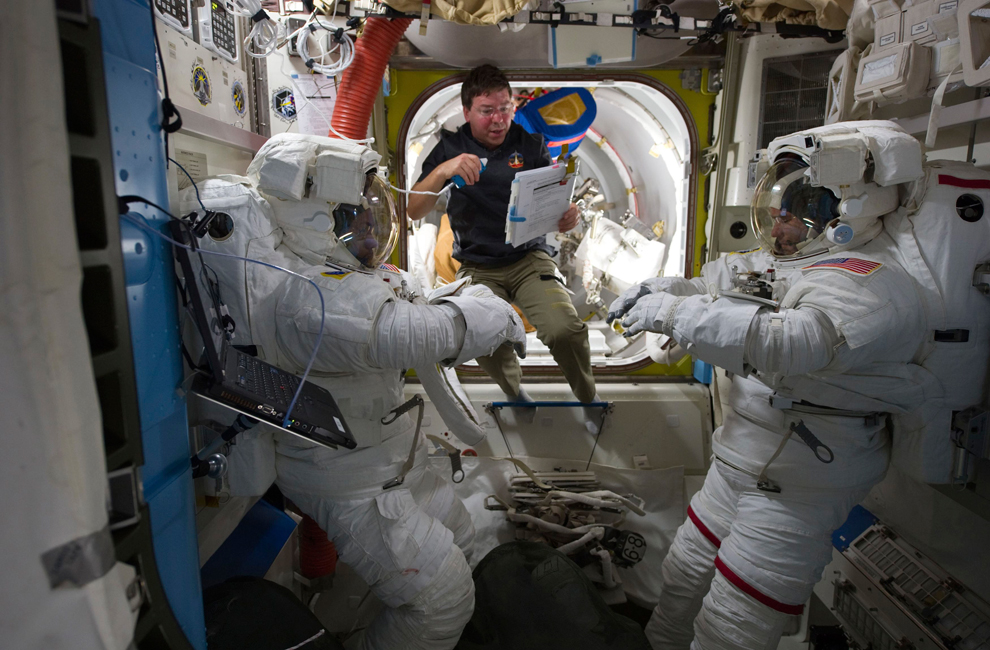
17
From left, astronauts Steve Bowen, Michael Barratt, and Alvin Drew prepare for the mission's first spacewalk in the Quest airlock of the International Space Station, Feb. 28. (NASA) #
18
Astronaut Alvin Drew began his shared spacewalking duties with fellow astronaut Steve Bowen, Feb. 28. (NASA) #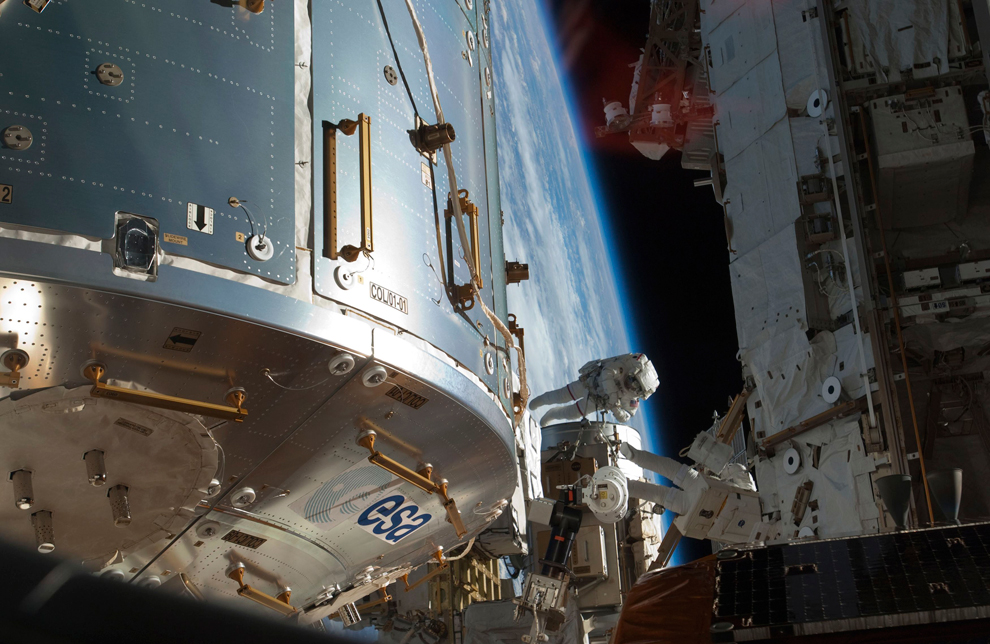
19
Astronauts Steve Bowen (left) and Alvin Drew (right) participate in the mission's first spacewalk as construction and maintenance continue on the International Space Station, Feb. 28. (NASA) #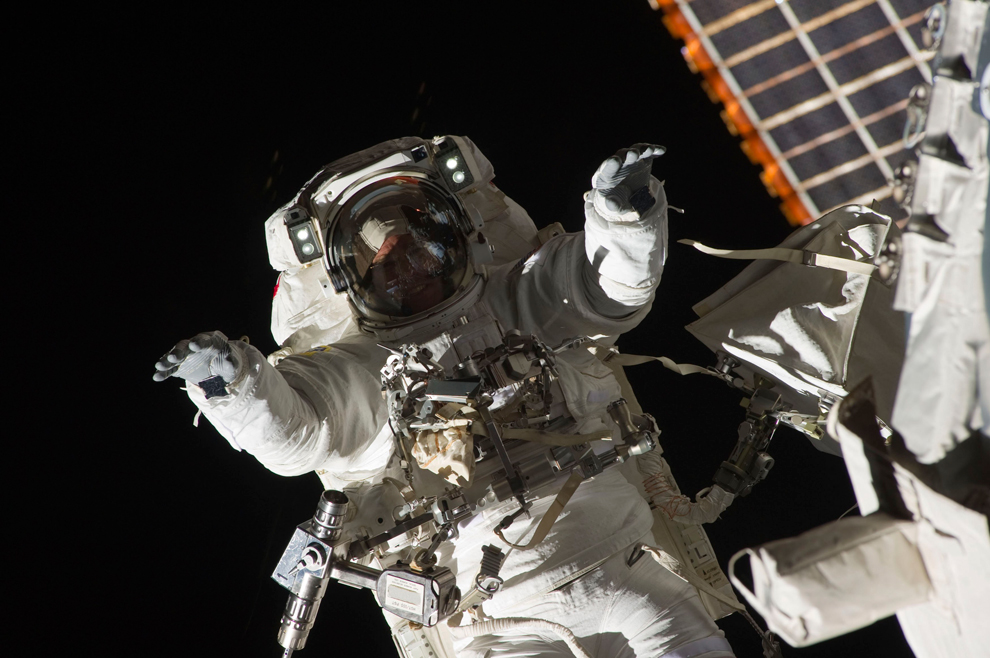
20
Space shuttle Discovery astronaut Steve Bowen works outside the International Space Station during the STS-133 mission's second spacewalk, March 2. (NASA) #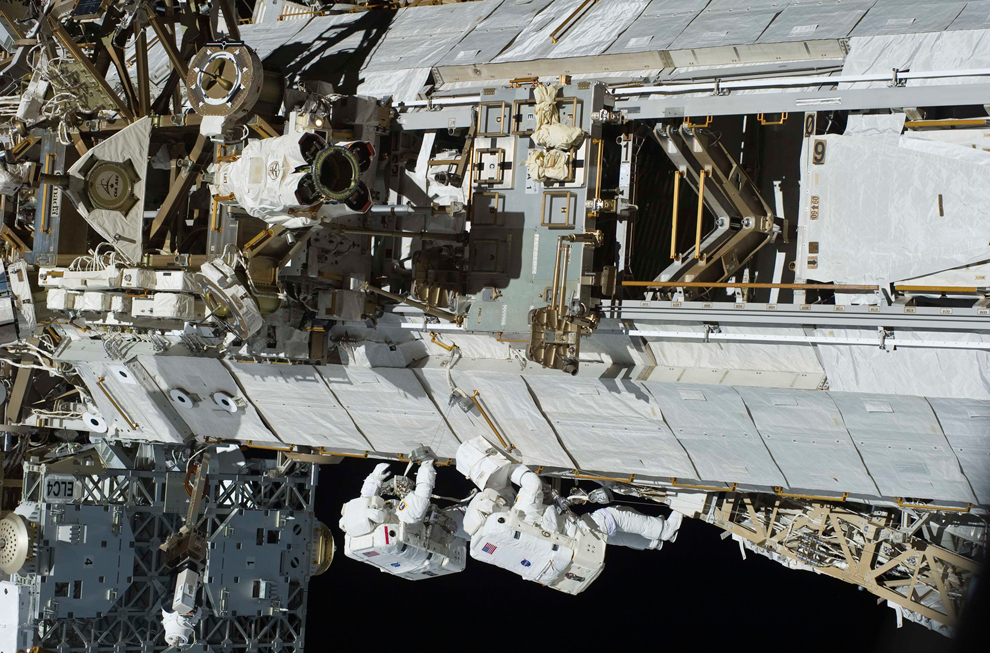
21
Astronauts Steve Bowen and Alvin Drew work on the International Space Station during the mission's first spacewalk, Feb. 28. (NASA) #
22
The aft section of space shuttle Discovery, docked with the International Space Station, was visible with cloud-streaked Earth as a backdrop, Feb. 26. (NASA) #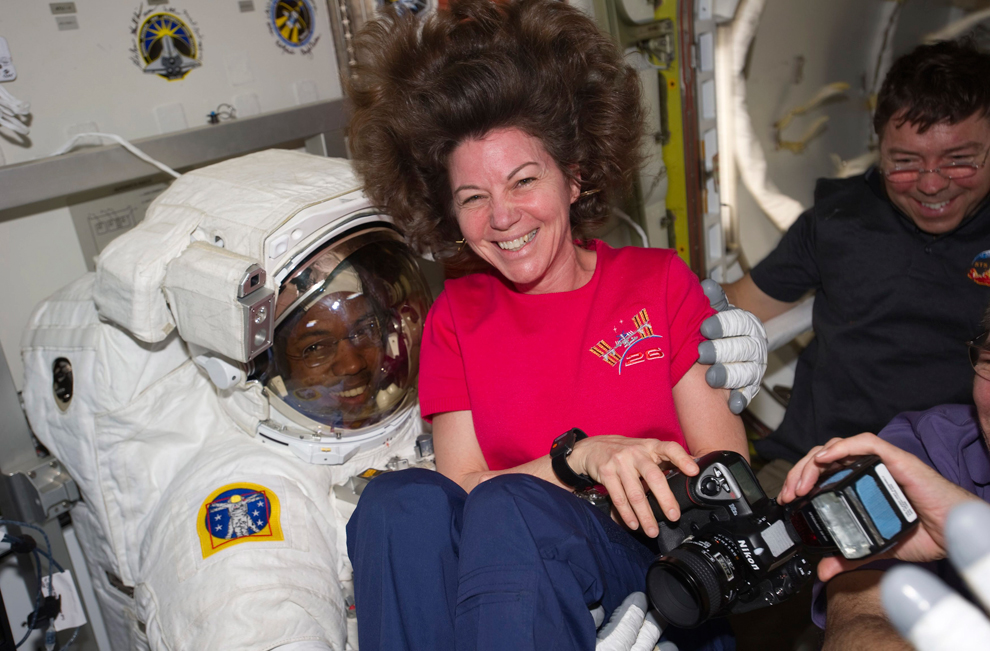
23
Astronauts, from left, Alvin Drew, Cady Coleman, and Michael Barratt enjoy a light moment in the Quest airlock of the International Space Station as the mission's first spacewalk draws to a close, Feb. 28. (NASA) #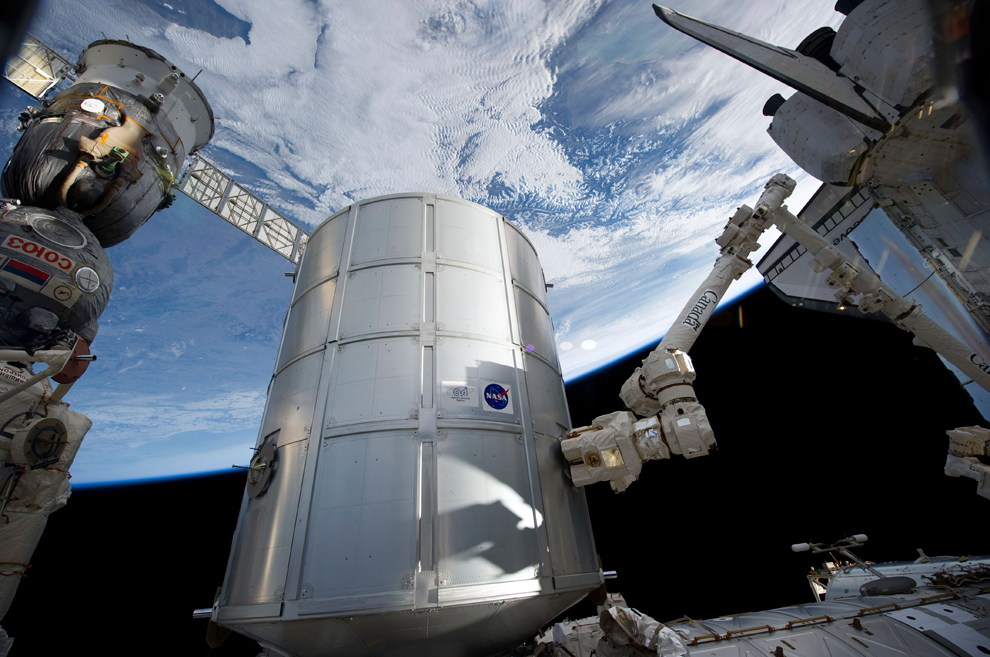
24
In the grasp of the International Space Station's Canadarm2, the Italian-built Permanent Multipurpose Module was transferred from space shuttle Discovery's payload bay to be permanently attached to the Earth-facing port of the station's Unity node, March 1. (NASA) #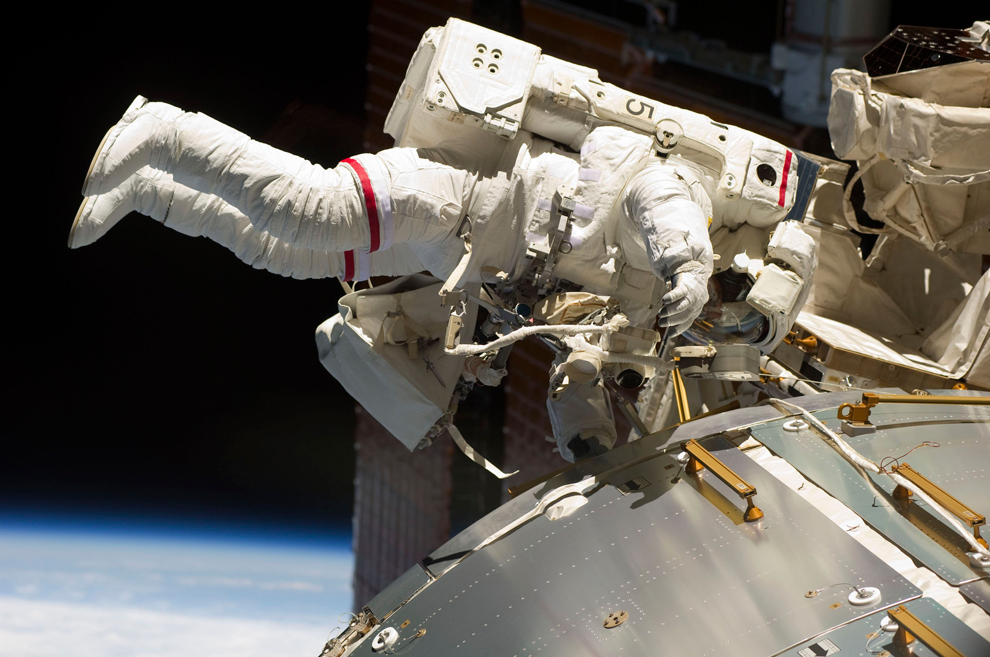
25
Discovery astronaut Steve Bowen works outside the International Space Station during the STS-133 mission's second spacewalk, March 2. (NASA) #
26
The docked space shuttle Discovery (STS-133) and the Canadian-built Dextre, also known as the Special Purpose Dextrous Manipulator, appear together in this photo, Feb. 27. (NASA) #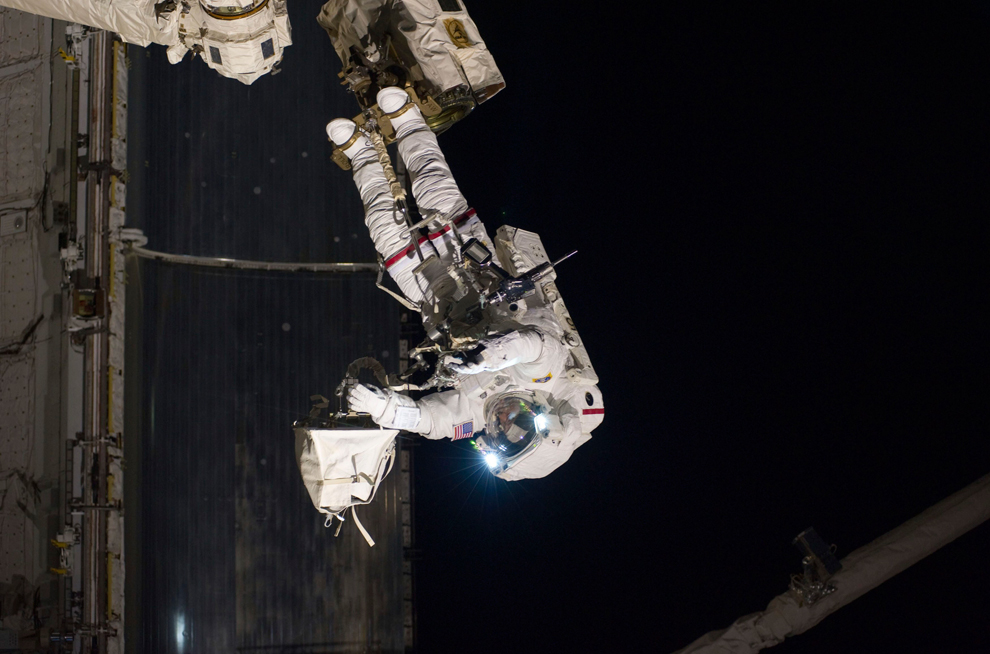
27
Astronaut Steve Bowen works outside the station during the STS-133 mission's second spacewalk, March 2. (NASA) #
28
The space shuttle Discovery accomplishes separation from the International Space Station to prepare for its final Earth landing, March 7. (NASA) #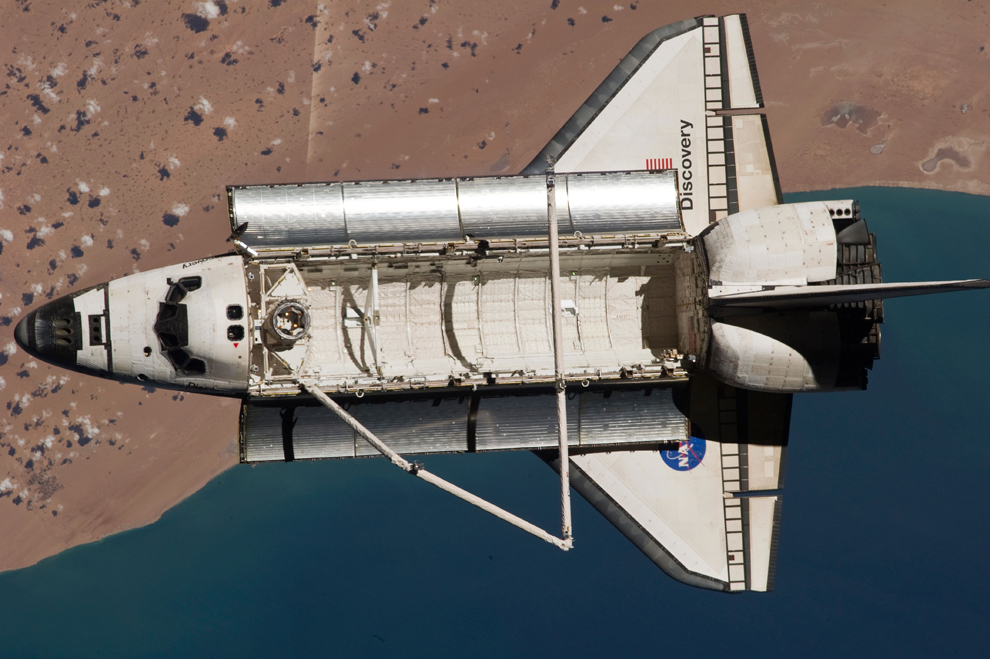
29
With its payload bay empty, the space shuttle Discovery separates from the International Space Station to return to Earth, March 7. (NASA) #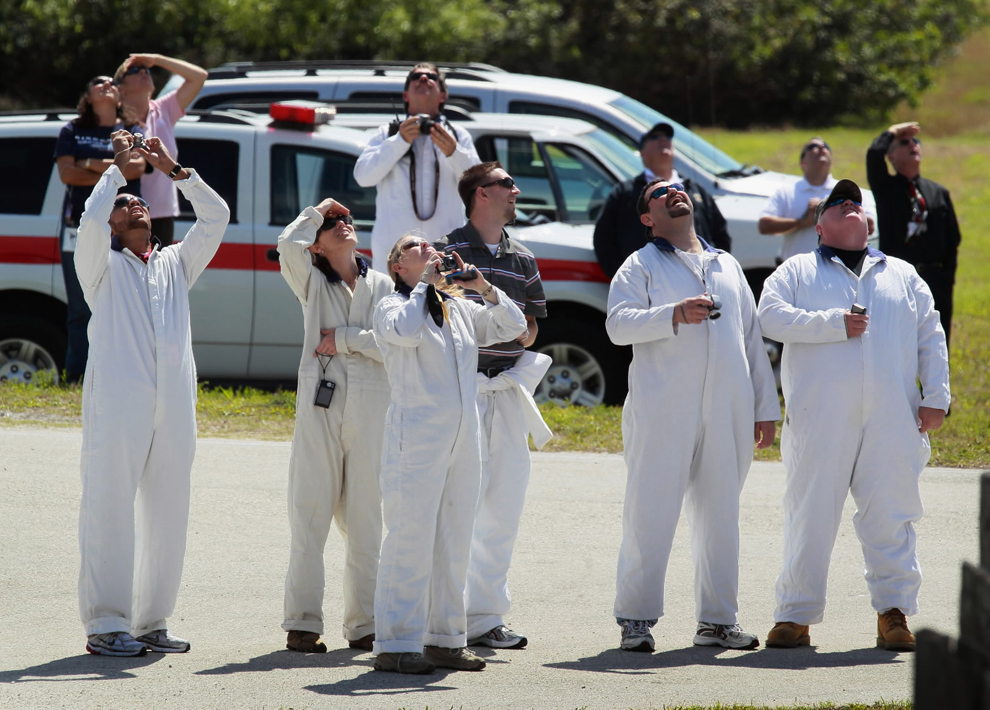
30
People watch as the space shuttle Discovery flies in for its final landing at Kennedy Space Center, March 9. (Joe Raedle/Getty Images) #
31
Space shuttle Discovery glides in for a landing at Kennedy Space Center in Cape Canaveral, Fla., completing its 39th and final flight, March 9. Since 1984, Discovery spent 365 days in space, orbited Earth 5,830 times, and traveled 148,221,675 miles. (Bill Ingalls/NASA) #
32
The space shuttle Discovery touches down at Kennedy Space Center, March 9. (Stan Honda/AFP/Getty Images) #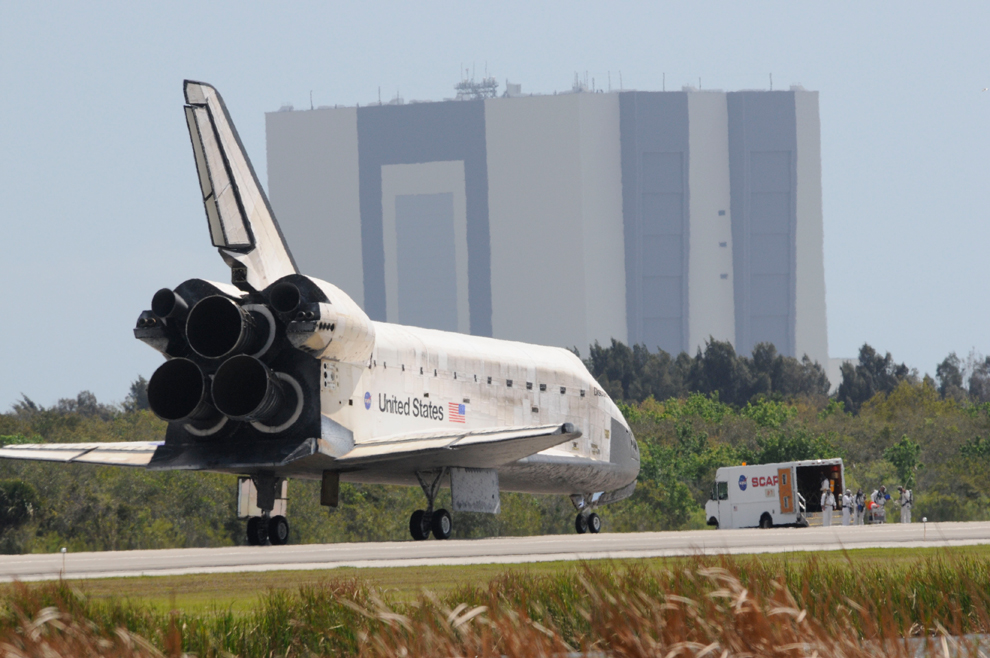
33
US space shuttle Discovery comes to a stop after landing at Kennedy Space Center in Florida, March 9. (Bruce Weaver/AFP/Getty Images) #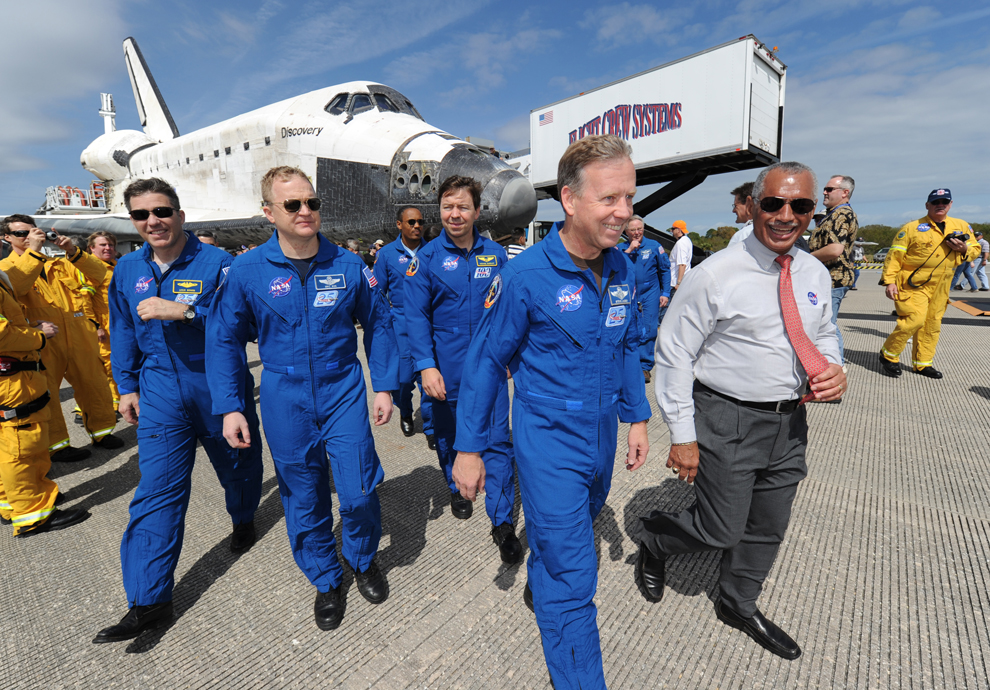
34
Discovery commander Steve Lindsey (second right) and NASA Administrator Charles Bolden (right) lead the crew after the shuttle landed, March 9. (Stan Honda/AFP/Getty Images) #
35
Discovery crew members, from left, commander Steve Lindsey, pilot Eric Boe, and mission specialists Alvin Drew, Steve Bowen, Michael Barratt, and Nicole Stott attend a news conference after their return from space, March 9. (Terry Renna/Associated Press)#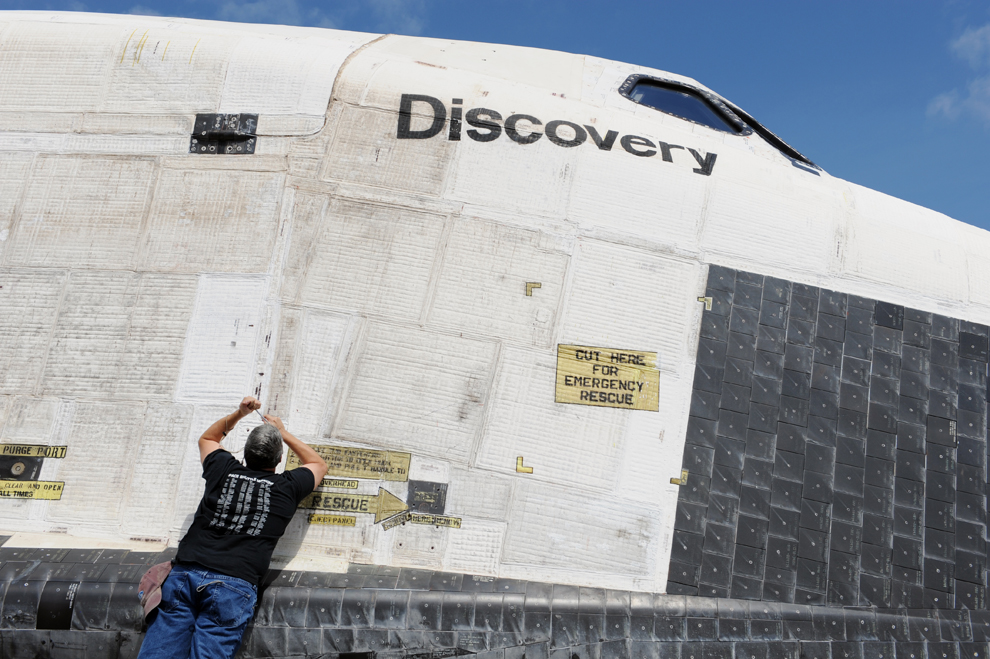
36
A landing crew worker checks the space shuttle Discovery after landing at Kennedy Space Center in Florida, March 9. (Stan Honda/AFP/Getty Images) #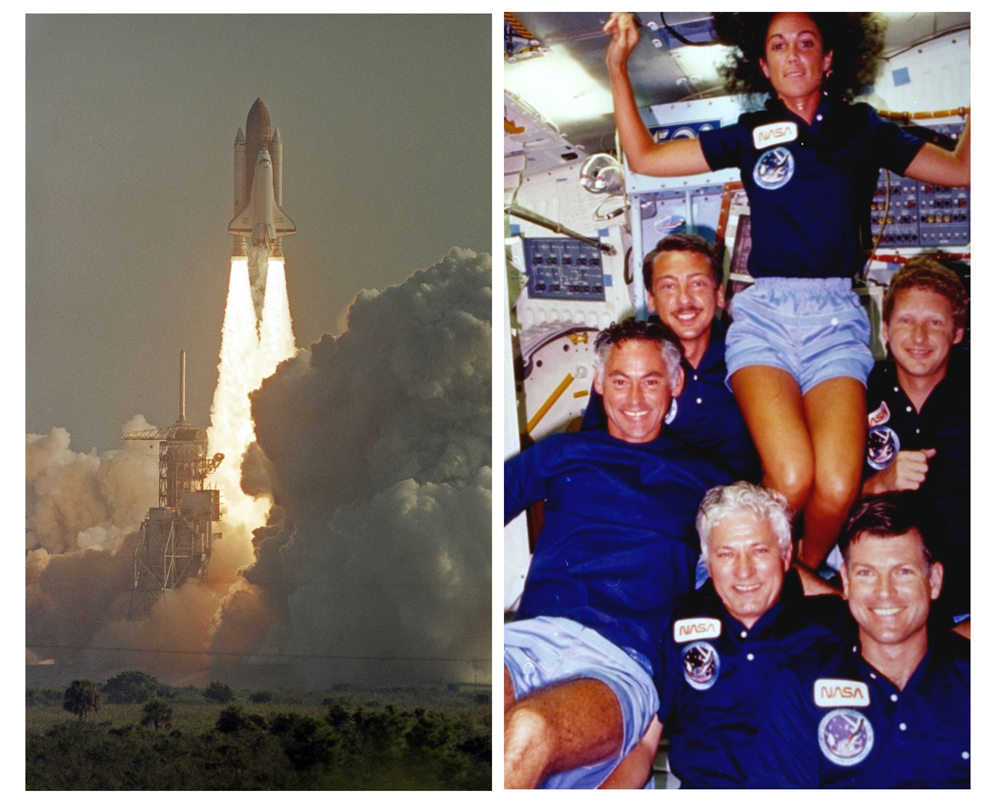
37
Space shuttle Discovery's place in history began, left, with its maiden launch from Kennedy Space Center, Aug. 30, 1984. The first crew included, counter-clockwise from center in right photo: commander Henry Hartsfield Jr., pilot Michael Coats, mission specialists Steven Hawley and Judith Resnik, payload specialist Charles Walker, and mission specialist Richard Mullane, Sept. 6, 1984. (photos by Associated Press and NASA) #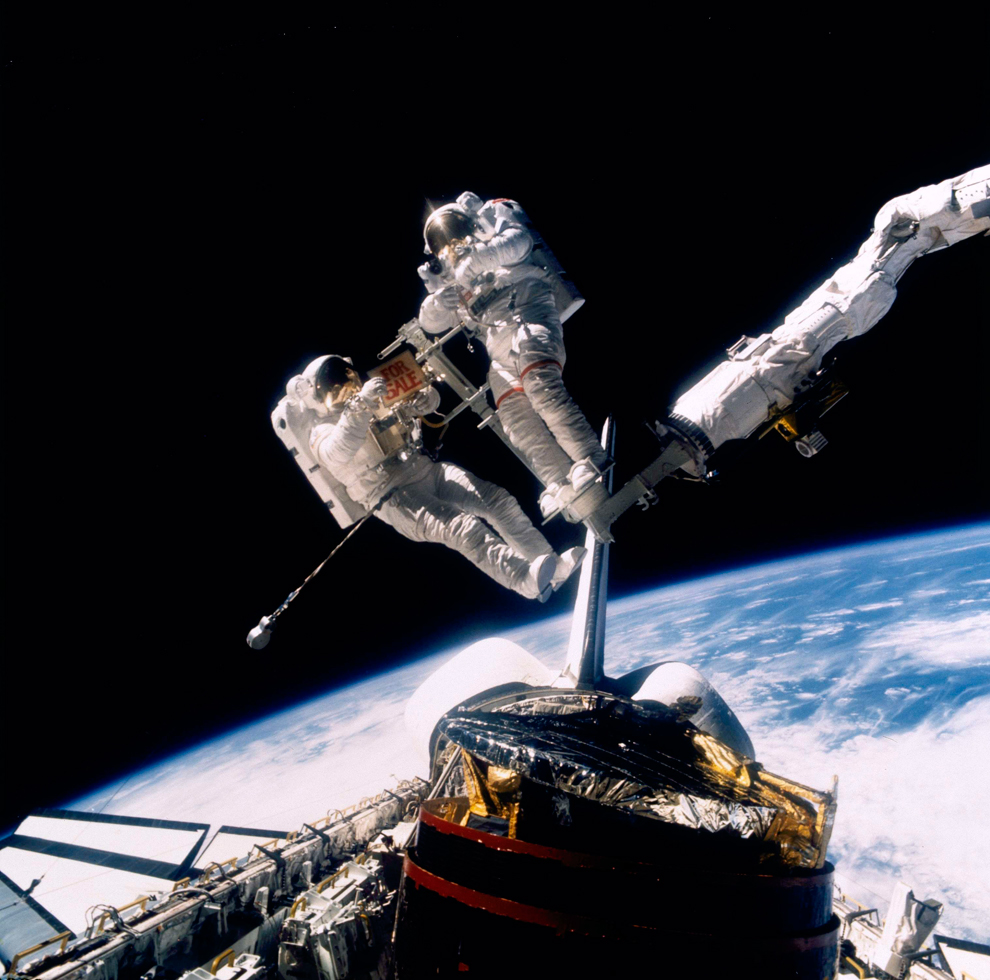
38
Astronaut Dale A. Gardner, left, holds a "For Sale" sign, making light of the status of the retrieved communications satellite below in the cargo bay of the space shuttle Discovery, November 1984. (NASA) #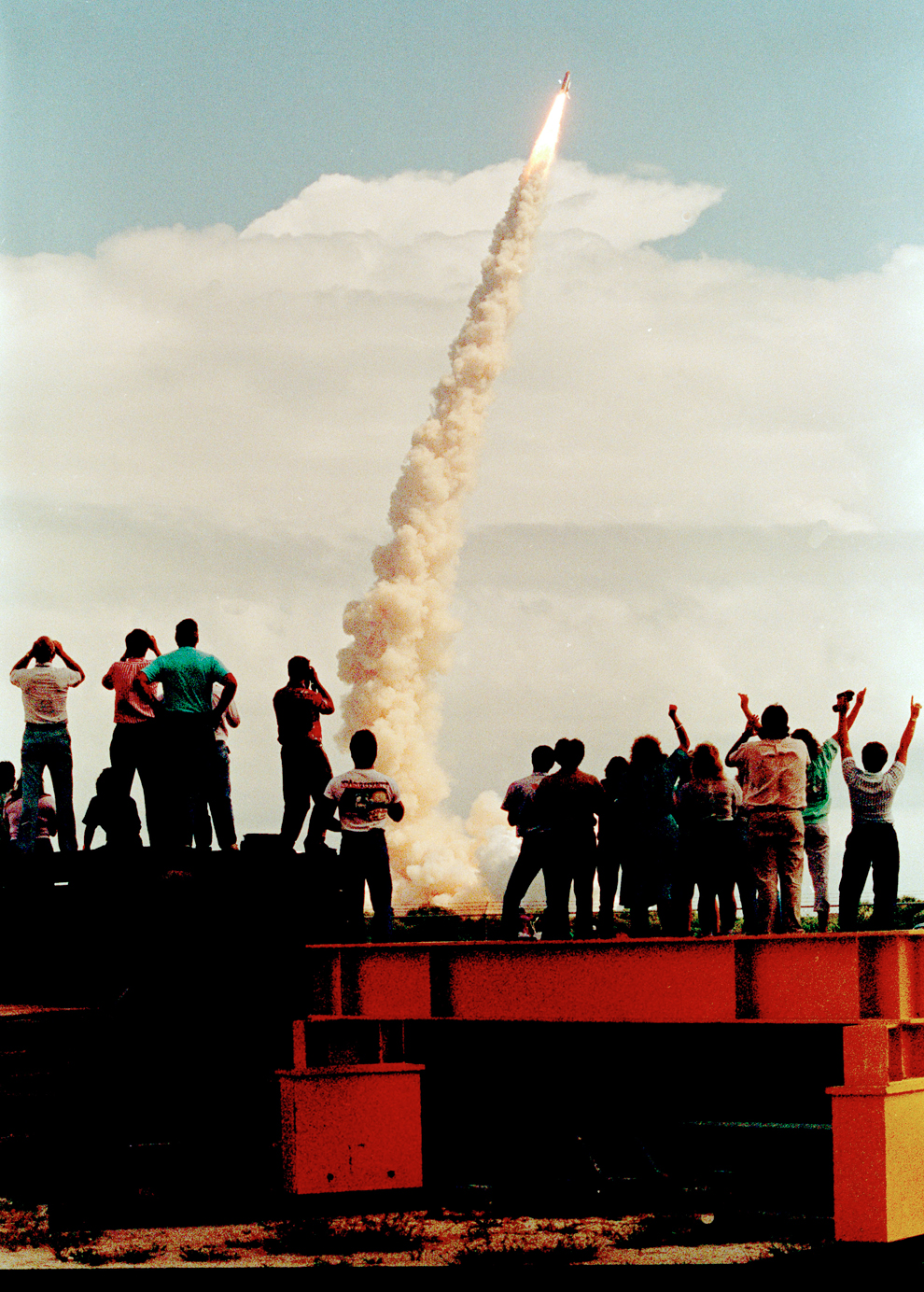
39
In the first launch since the space shuttle Challenger disaster on Jan. 28, 1986, NASA employees cheered on the roof of the Vehicle Assembly Building of the Kennedy Space Center as Discovery lifted off successfully, Sept. 29, 1988. (Thom Bauer/Associated Press) #
40
STS-95 mission commander Curtis Brown (left) and payload specialist John Glenn held a press conference on Discovery's aft flight deck of Discovery, Nov. 1, 1998. (NASA) #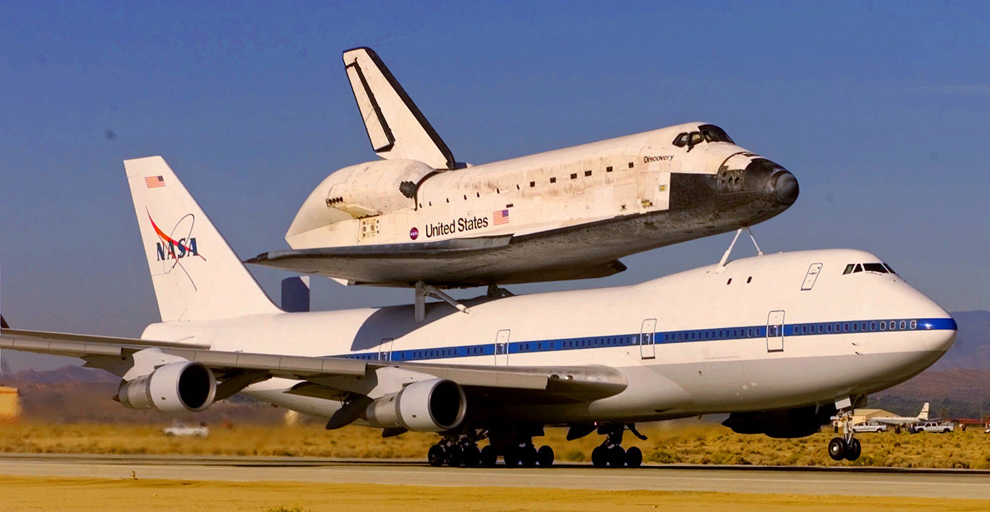
41
A Boeing 747 carried space shuttle Discovery back to Kennedy Space Center in Florida after a weather-related landing at Edwards Air Force Base in California, Nov. 2, 2000. (Reed Saxon/Assocaited Press) #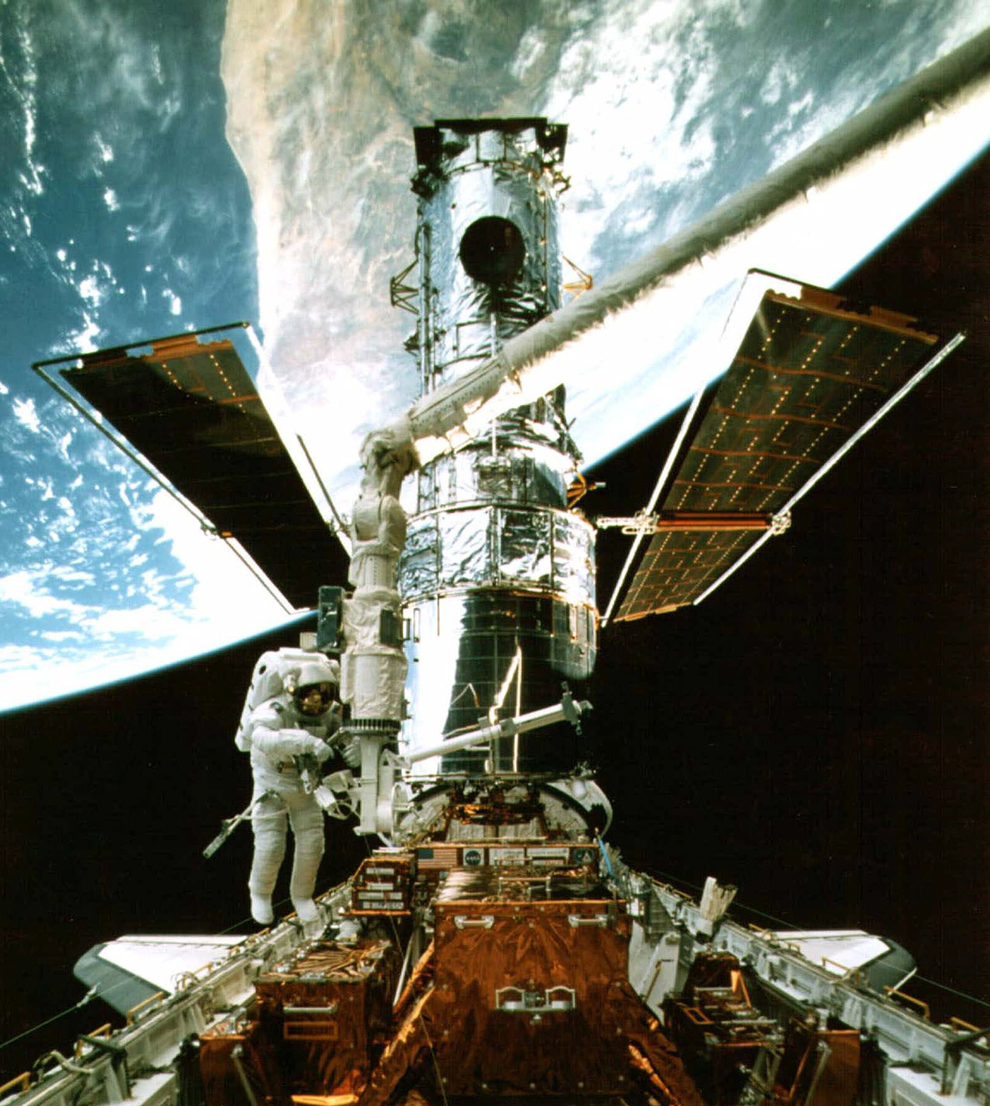
42
Astronaut Steven Smith worked at the end of Discovery's remote manipulator system as he did maintenance work on the Hubble Space Telescope, Feb. 15, 1997. (NASA) #
43
Discovery commander Eileen Collins, shown with astronaut John Phillips, was the first female commander of a space shuttle, July 28, 2005. (NASA TV) #
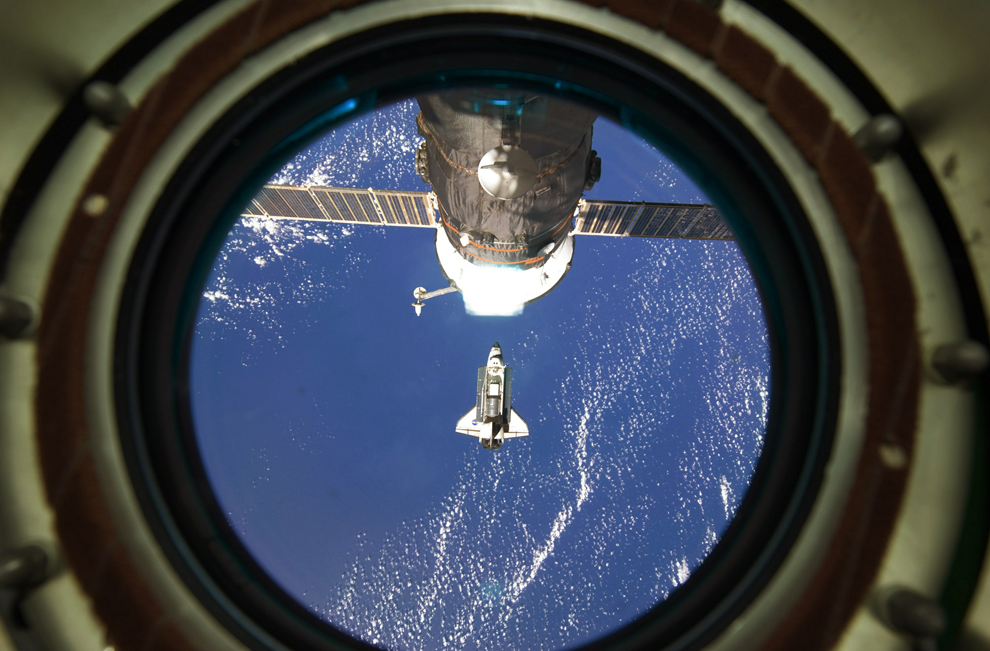
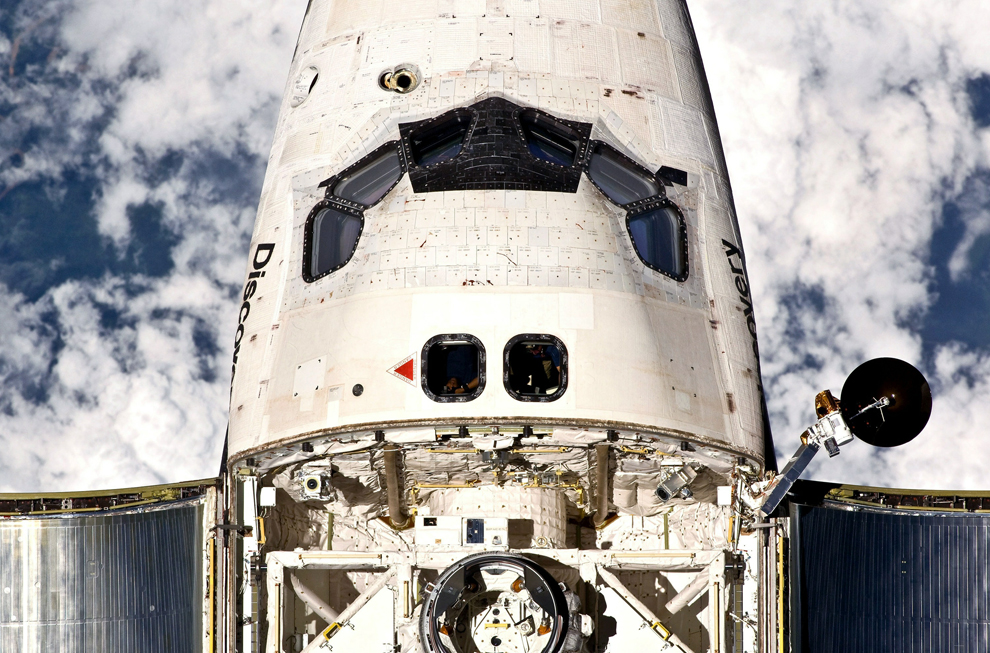
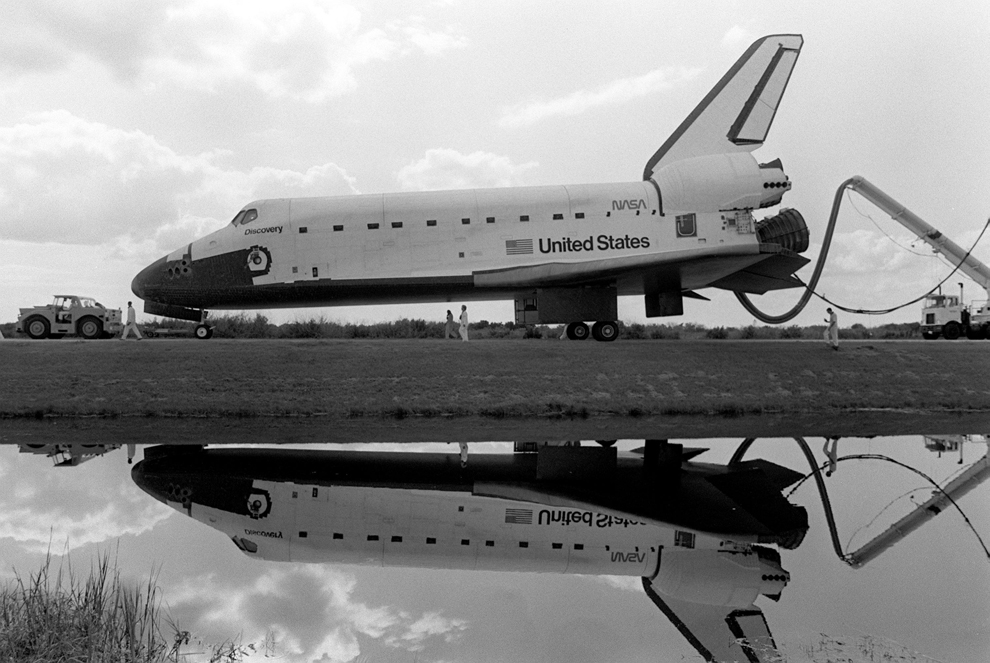

No comments:
Post a Comment